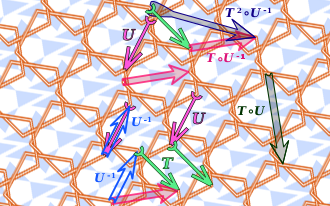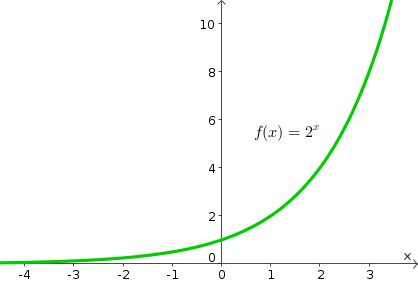Write4U
Valued Senior Member
That is the pertinent question.Good point .
Where then do mathematics come from then ?
IMO, everything that can be measured and translated into a symbolic representation is of "logical necessity" a mathematical construct.
It is what allows us to posit universal constants, the laws that govern the dynamical evolution of universally pervasive patterns such as; fractals, functions, equations, exponential functions, symmetry/symmetry breaking, invariants; [/quote]
Invariant (mathematics)

A wallpaper is invariant under an infinite number of translations, members of a group, of which the operation denoted by (o) is the function composition.
In mathematics, an invariant is a property of a mathematical object (or a class of mathematical objects) which remains unchanged after operations or transformations of a certain type are applied to the objects.[1][2][3] The particular class of objects and type of transformations are usually indicated by the context in which the term is used. For example, the area of a triangle is an invariant with respect to isometries of the Euclidean plane. The phrases "invariant under" and "invariant to" a transformation are both used.[1] More generally, an invariant with respect to an equivalence relation is a property that is constant on each equivalence class.[4]
https://en.wikipedia.org/wiki/Invariant_(mathematics)Invariants are used in diverse areas of mathematics such as geometry, topology, algebra and discrete mathematics. Some important classes of transformations are defined by an invariant they leave unchanged. For example, conformal maps are defined as transformations of the plane that preserve angles. The discovery of invariants is an important step in the process of classifying mathematical objects.[3][4]
Symmetry in mathematics

The root system of the exceptional Lie group E8. Lie groups have many symmetries.
Symmetry occurs not only in geometry, but also in other branches of mathematics. Symmetry is a type of invariance: the property that a mathematical object remains unchanged under a set of operations or transformations.[1][2]
Given a structured object X of any sort, a symmetry is a mapping of the object onto itself which preserves the structure. This can occur in many ways; for example, if X is a set with no additional structure, a symmetry is a bijective map from the set to itself, giving rise to permutation groups. If the object X is a set of points in the plane with its metric structure or any other metric space, a symmetry is a bijection of the set to itself which preserves the distance between each pair of points (i.e., an isometry).
https://en.wikipedia.org/wiki/Symmetry_in_mathematicsIn general, every kind of structure in mathematics will have its own kind of symmetry, many of which are listed in the given points mentioned above.
The exponential function
Overview of the exponential function
The exponential function is one of the most important functions in mathematics (though it would have to admit that the linear function ranks even higher in importance).
To form an exponential function, we let the independent variable be the exponent. A simple example is the function: f(x) = 2x.
In mathematics, a function[note 1] is a binary relation between two sets that associates to each element of the first set exactly one element of the second set. Typical examples are functions from integers to integers, or from the real numbers to real numbers

As illustrated in the above graph of (f) the exponential function increases rapidly. Exponential functions are solutions to the simplest types of dynamical systems. For example, an exponential function arises in simple models of bacteria growth.
https://mathinsight.org/exponential_functionAn exponential function can describe growth or decay. The function: g(x)=(12)x
continued....
Last edited:




